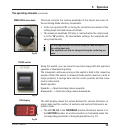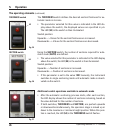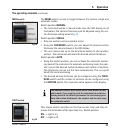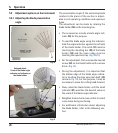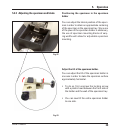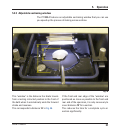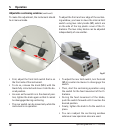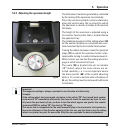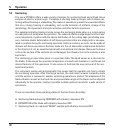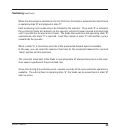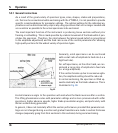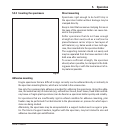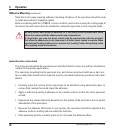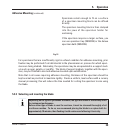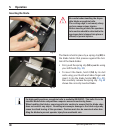
33
Leica VT1000 A
5. Operation
5.2.4 Adjusting the specimen height
The thickness of sections generated is controlled
by the raising of the specimen incrementally.
Since the sectioning blade remains stationary
along the vertical axis, the increment by which
the specimen is raised correlates to the section
thickness.
The height of the specimen is adjusted using a
micrometer feed system that is located below
the specimen tray.
The rotational movement of the setting wheel (58)
for the section thickness is converted into a ver-
tical movement by the micrometer feed system.
Turning the wheel clockwise raises the specimen
stage (27) on which the specimen holder is fas-
tened, while turning it counterclockwise lowers it
.
When turned, you can feel the setting wheel en-
gage in notch increments of 5 µm.
The scale (59) is divided into µm increments
(10
-6
meter), where the scale values are se-
lected randomly, i.e. it is not important where
the black pointer (60) of the scaled adjusting
knob is. To create a section with a thickness of
60 µm, the setting must be increased by 60 scale
increments.
Fig. 48
58
59
60
Important!
The respective setting is always consistent in one direction of rotation only.
Example:
If the setting wheel has been turned clockwise to the setting "30", then turned back counter-
clockwise to "25" immediately afterwards, this does not lower the specimen by 5 µm. To actu-
ally lower the specimen by 5 µm, you have to turn the wheel approx. one quarter turn counter-
clockwise PAST the setting "25", then back to "25" again.
This means that to compensate for the small amount of play in the micrometer feed system, be-
fore each adjustment in the direction opposite to the last one, you first have to turn the setting
wheel one-quarter turn past the new value. Only then can you make the desired adjustment.
27



